Willy Marchand
Author: Andreas Franke

Origin
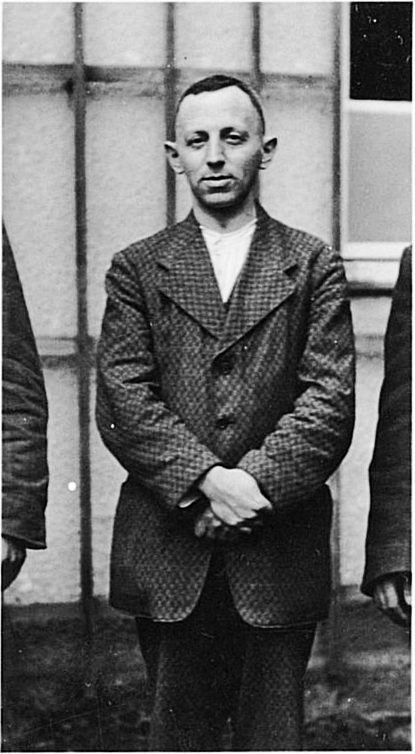
A colourful personality - this was Professor Dr. Günter Dippold's comment to Willy Marchand when I told him about my project to research the fate of Jews in Lichtenfels.
Willy Marchand was the only child of Max and Henriette Marchand. He was born in Wiesbaden on March 31th, 1897. In october 1897, the family moved from Wiesbaden to Lichtenfels. His father owned a basket-trading company, which specialized in import and export with France and Belgium.
A gifted student
From 1903-1908, Willy attended elementary school together with his friend and future lawyer Dr. Thomas Dehler. Dr. Thomas Dehler was not only one of the few lawyers who represented Jews during the National Socialism, but was also a co-founder of the FDP Bavaria after the end of the Nazi regime and the first Federal Minister of Justice in the Federal Republic of Germany. He was married to Irma Frank, a Jew.
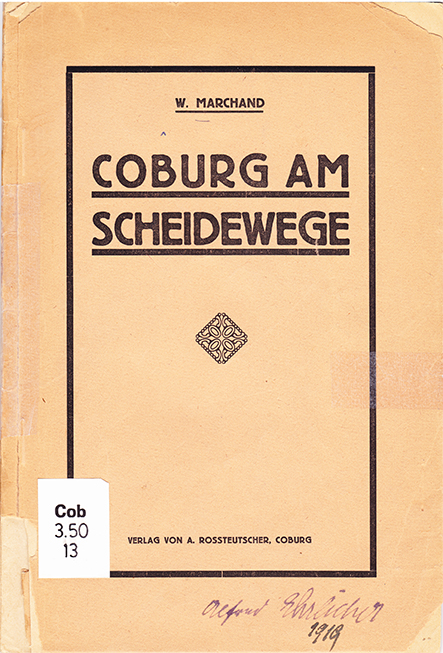
After elementary school, Willy attended the newly founded secondary school, today the Meranier-Gymnasium, and then the Coburger high school Casimirianum. There, he went to classes together with Robert Pauson from Lichtenfels. Willy took lessons in Italian and Spanish, which distinguished him from his fellow citizens. This is because he could not only go to secondary school, but also switched to high school, which was only possible for a few of his contemporaries.
From 1917 to 1919, Willy worked as a trainee at the Coburger Tageblatt, the press organ of the social democracy, and wrote several articles about Lichtenfels and the surrounding area. From 1919 to 1920 Willy Marchand wrote the book "Coburg am Scheideweg", which is about Coburg's affiliation to either Bavaria or Thuringia; published by Veste Verlag Roßteutscher in Coburg. Marchand showed himself to be very open-minded and politically interested.
Failure as a basket trader
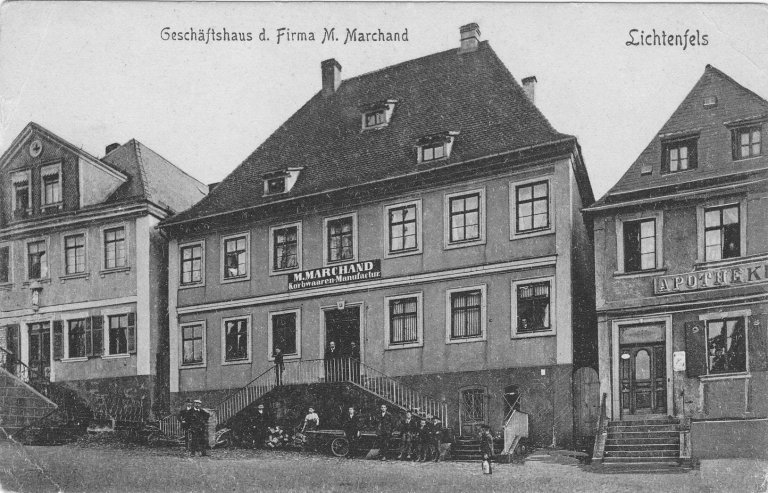
His father Max died and was buried in the Jewish cemetery in Lichtenfels. After his father's death in 1923 Willy took over the basket-trading company. Six years later, the prestigious commercial building had to be foreclosed, the company went bankrupt.
Mental Illness
In September 1931, his mother's sister, Emma Braunschild, applied to the Coburg District Court for Willy to be incapacitated because of mental inferiority. Two weeks later, Willy's mother Henriette also applied for incapacitation. The reason it was based on, was his abnormal business conduct, which ruined her almost completely; he seemed to suffer from megalomania and paranoia.
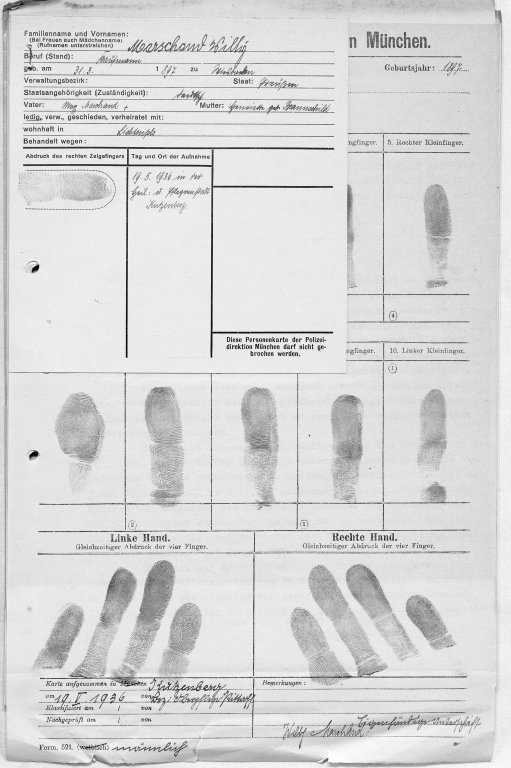
In the following period, Willy Marchand repeatedly turned to government agencies and claimed to be able to influence the English King through his alleged relationship with the Romanian Queen. Further he stated, the German foreign politics were essentially determined by him, Willy Marchand.
As of 1935, he was monitored by the police and eventually locked up by the gendarmerie in the Kutzenberg sanatorium on the morning of 4th January 1936. There, he was kept busy with simple bookbinding and paperwork. A list of the medical records kept there shows that Willy received visits from Dr. Thomas Dehler and the Jewish families Kraus, Hellmann and Goldmeier from Lichtenfels.
Murder within the framework of Aktion T4
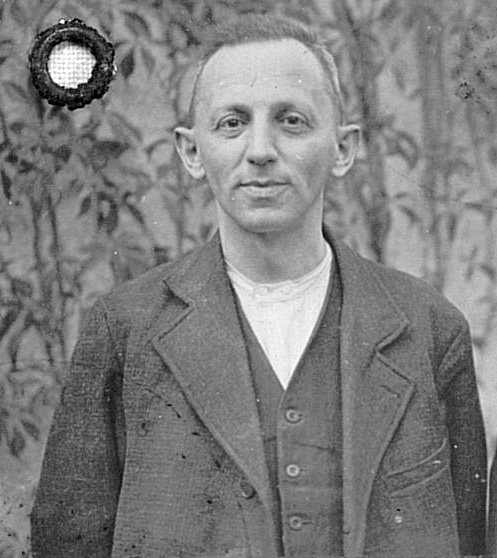 Quelle: Staatsarchiv Coburg, K 61 Nr. 3380
Quelle: Staatsarchiv Coburg, K 61 Nr. 3380The medical file also states that Willy Marchand was only 1,53 m tall and weighed 52 kg at the time of admission. Willy spent almost five years in Kutzenberg before he and other Jewish patients were transported to the Eglfing/Haar institution on 14th September 1940.
The name Marchand appears on a relocation list which was compiled as part of the Nürnberger Trials. It can be assumed that Willy was on the transport to Hartheim near Linz on 20th September and was murdered on the same day. According to this, he died at the age of 43 and was the last Jew to be buried in the Jewish cemetery in Lichtenfels.
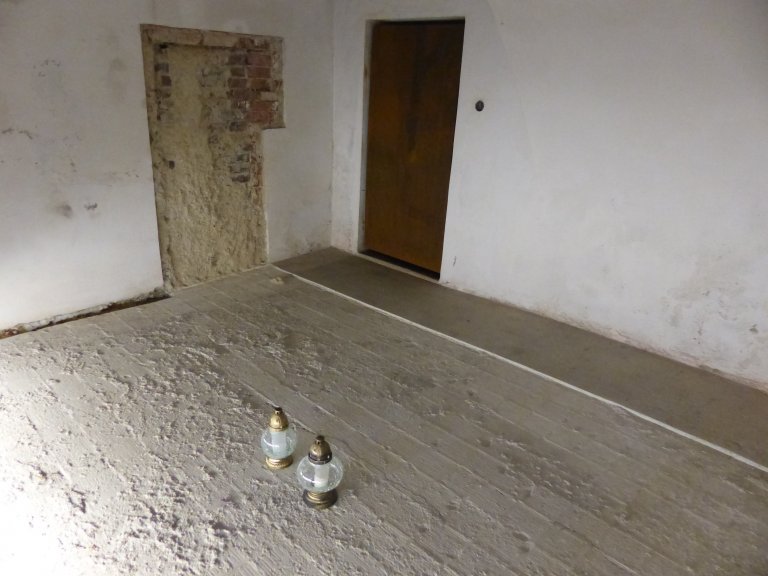
70.000 inmates from sanatoriums and nursing homes fell victim to the "Aktion T4" ordered by Hitler. In 1940 and 1941, 446 patients from the Kutzenberg sanatorium and nursing home were deported to one of the six T4 killing facilities and murdered there as part of the so-called euthanasia. A memorial is now to be created in the upcoming new building of the clinic in Kutzenberg under the direction of the health facilities of the Upper Franconia district to remember the victims.
